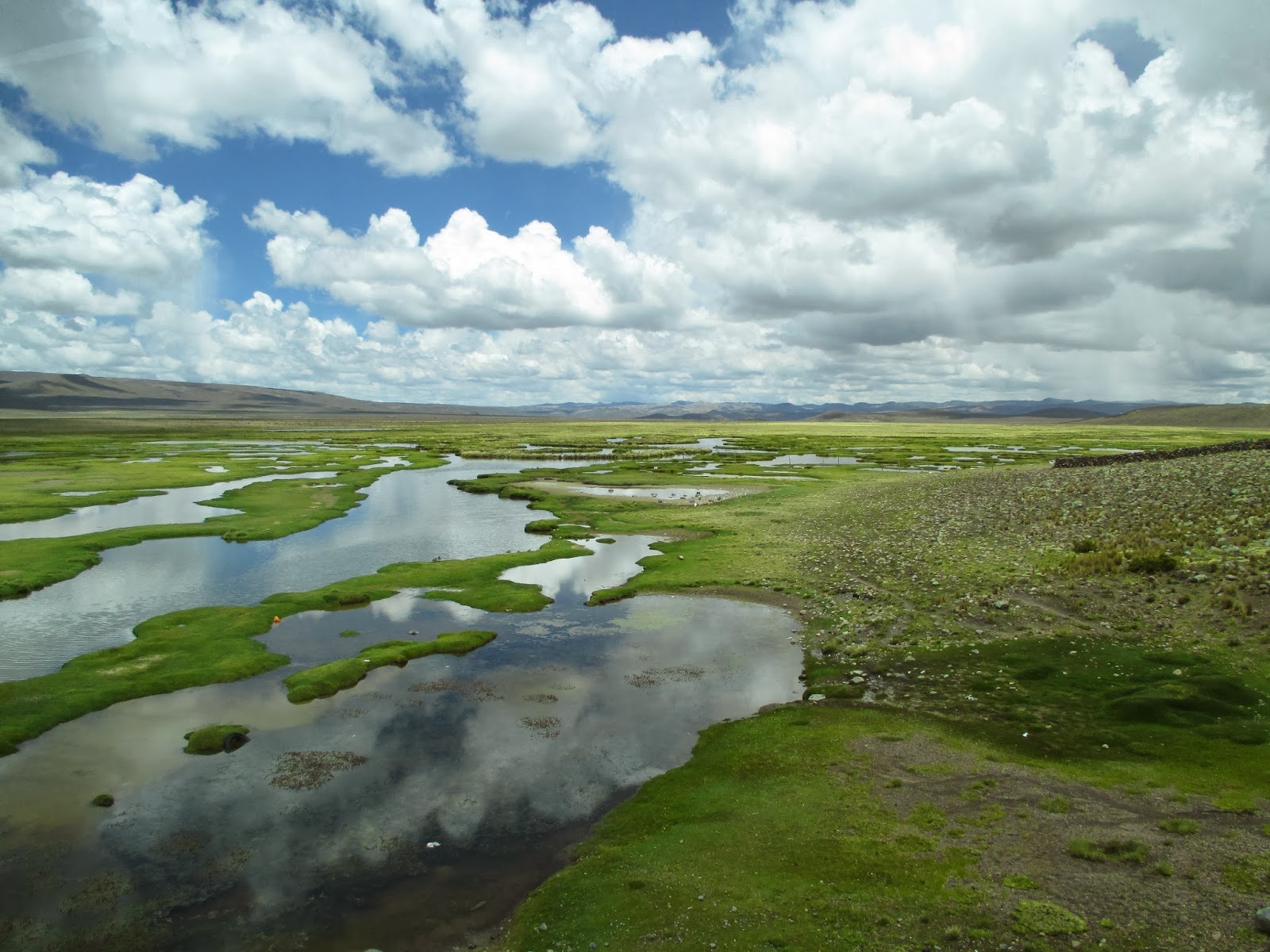We drove up the highway and admired the lumpy sprawl of cacti-spotted mountain ranges below. The Andes themselves are a little bit spectacular. I strained my neck taking drive-by shots of the plastic-strewn carpet of scrub. As the road was a series of sharp bends, overtaking became an extreme sport. Peruvian drivers are... courageous. Their indicators are their horns, and their patience is non-existent.
Upon spotting some wild huacanos (not-quite-llamas), we stopped for a photo op and the 3900m altitude ripped on in. Then a herd of vicuña pranced across the road, all skinny long necks and sweet deer faces (if deer had sweet faces, which they don't). And finally, llamas! Alpacas! Our guide taught us how to distinguish between them: large snout plus upright ears equals llama, short snout plus bendy ears equals alpaca. Also, Kathy squeals louder if alpaca.
We drove on heading downwards along a winding cliffside highway, and everything started to look a lot like the NZ South Island. It was just like the road heading up out of Queenstown, but a little faded and llama-heavy. All was cliff and canyon, with tiny villages tucked into small green valleys.
Dinner was quinoa soup again, but this one did not live up to lunch's standards due to mystery cheese. I had no choice at all but to pick at some of Niki and Kathy's alpaca lomo saltado. How terrible for me.
At stupid o'clock next morning, the non-altitude-incapacitated half of our group hopped right back on that bus to go condor-spotting in the Colca Canyon. We followed the stony-bottomed river through the lush valley. The sight of gumtrees pressed up against cacti was quite amusing; definitely not something you see everyday in Australia.
On the way, our guide told us the story behind the two varieties of hats that the Colca locals wear. Those wearing the tall flat-topped hats are descended from the Collaguas, who used to tie rope around their skulls to stretch them into a tall elongated shape. Meanwhile, the bowl-shaped hat wearers descend from the Cobanas, who similarly used ropes to achieve squashed flat heads. Fascinating and disturbing all at once.
We had a brief stop at a convenient cliffside to take a photo with two traditionally dressed women and their baby llama and alpaca. Kathy went into raptures and molested the alpaca while I admired the llama's fantastically expressive eyebrows. Niki was Cameloid Switzerland. Our backdrop was a stunning piece of Colca Valley striped with Incan and pre-Incan terraces. These look like squat stone walls, and are still used to foster micro-climates which pump out 30 plus species of potatoes and other produce.
We rumbled along rockfall gully road until we reached a tunnel running under the mountain. After assuring us that this tunnel was bursting with evil spirits, the guide proceeded to drive through without headlights - to create a 'spooky atmosphere'. I almost wet myself. Evil spirits indeed.
On the way back to Chivay, we stopped in at the earthquake-ravaged village of Maca, which specialises in selling prickly pear juice to tourists like me. (It tastes like slightly sour kiwi fruit in the best possible way.) I followed this up back in Chivay with several pieces of deep-fried plantain (think orange banana) which were specially delivered to our table in response to my puppydog eyes. It was more like dessert than lunch: win.
What next but a soak at the local hot springs? Well, before I actually got into the water, I crossed a wobbly bridge in boardies plus polar fleece to watch Niki and Kathy zip line across the river. Apparently Niki did her second line upside down, but by that time I was already in the 39 degree outdoor bath.
Dinner was a real highlight. The (terrible) food was accompanied by traditional dancing and a pan flute band - no better way to pass an evening! I was conscripted to join the very first dance due to seating arrangements. This was a courtship dance, requiring the male partner to wear a skirt and pretend to be a woman in order to get past the lovely lady's suspicious family. My role was a bit simpler: allow myself to be led and twirled and photographed by tables of tourists.
One particular dance was nothing less than bizarre. The man and the woman danced around each other, keeping their distance, until one of them caught malaria. This person would fall to the ground and start twitching, whereupon their partner would start whipping them in time to the music. When this somehow failed to cure the malaria, the healthy partner would either wave their sandal (if a man) or suggestively crouch over (if a woman) the sick person's face. Magically cured, the malaria victim would come to, get to their feet, and start dancing all over again.
It was a memorable night. The Colca Valley was a wonderful surprise in many respects; definitely a must-see on anyone's Peruvian touristing itinerary. Say hola to Pepe the Alpaca for us.

















No comments:
Post a Comment